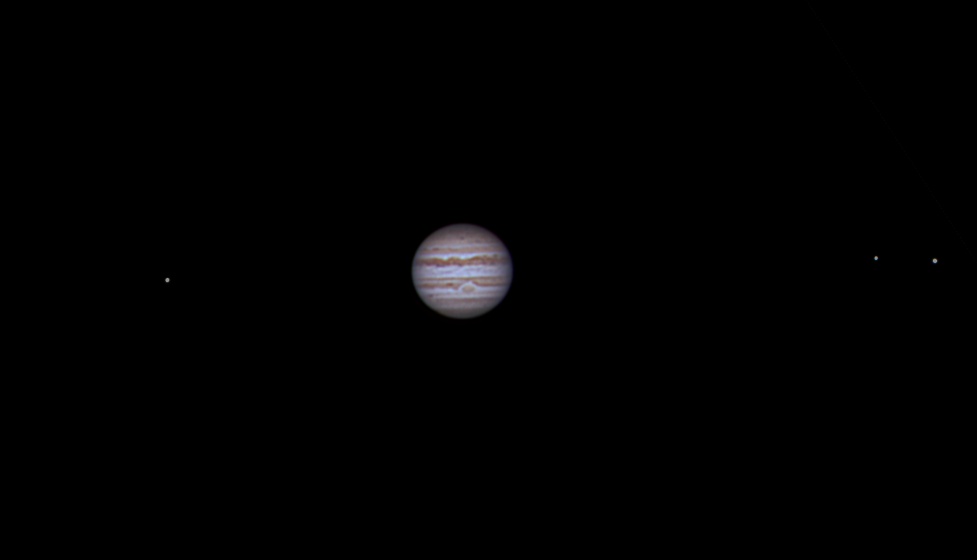
The Great Red Spot on Jupiter is a large anti-cyclonic (high pressure) storm. The Great Red Spot is so large that three Earths would fit within its boundaries. This storm system rotates counterclockwise in Jupiter's southern hemisphere. It is similar to a hurricane on Earth, except that a hurricane is a low presurre system. This remarkable phenomenon has persisted on Jupiter for 400 years.
The two main constituents of the Jovian atmosphere are molecular hydrogen and helium. The atmosphere contains various simple compounds such as water, methane, hydrogen sulfide, ammonia, carbon dioxide, carbon monoxide, and phosphine. The upper atmosphere of Jupiter contains small amounts of simple hydrocarbons such as ethane, acetylene, and diacetylene. These compounds probably form from methane when it is exposed to solar ultraviolet radiation and charged particles coming from Jupiter's magnetosphere. The atmosphere also contains trace amounts of other chemical compounds such as arsine and germane. Current atmospheric models for Jupiter suggest that the water present in the upper part of the atmosphere comes from external sources, because air currents prevent water from rising to the stratosphere from the troposphere. One hypothesis is that the water probably originates from comets crashing into the planet, such as the comet that impacted Jupiter in July 2009.
This image was taken with a Takahashi FCT-150 refractor using an SBIG ST-8XE and 4x PowerMate. The image was taken from my backyard in Scottsdale, Arizona. Jupiter was 48 arc-seconds in size at magnitude -2.8. You can see three of Jupiter's moons in this image.
Constellation: Capricornus
RA: 21h 46m 46s Dec: -14d 29' 50"
July 30, 2009
Image by Sid Leach
Scottsdale, Arizona
Recent Images.
Complete list of images.
Description of equipment used to acquire images.
Home
Feedback and comments should go to Sid